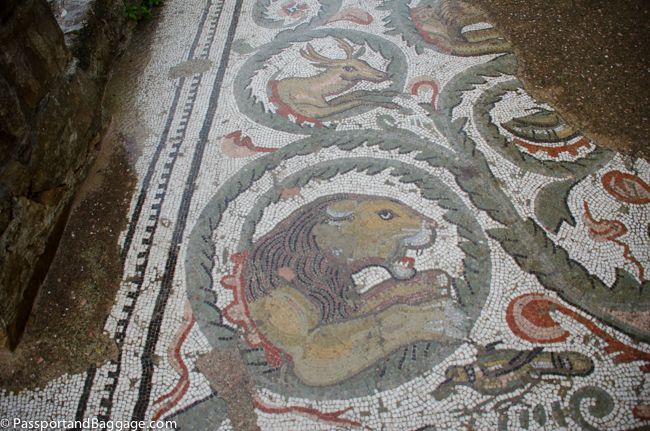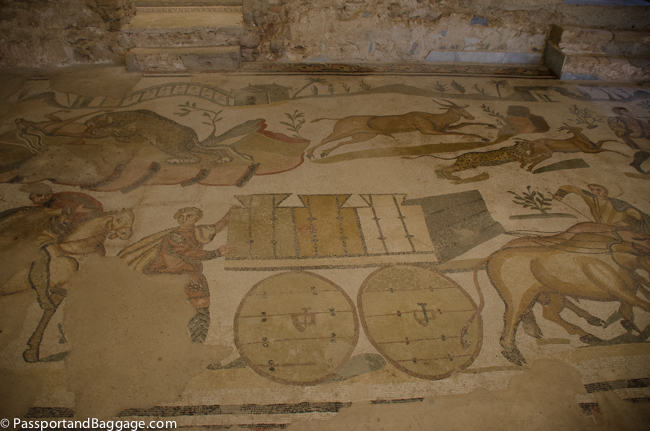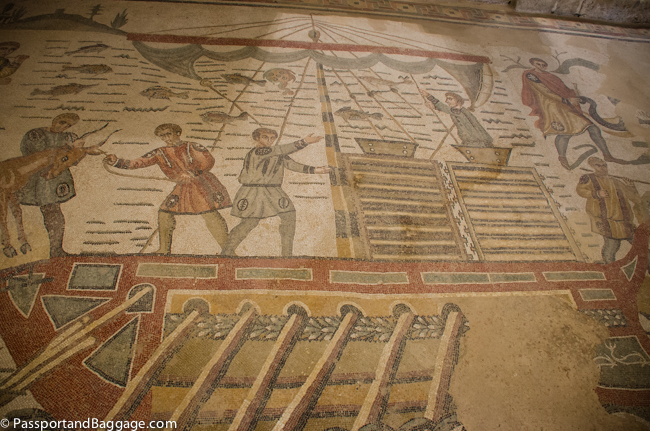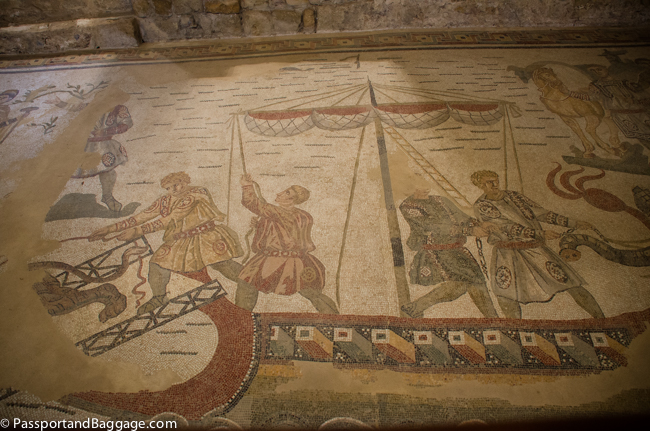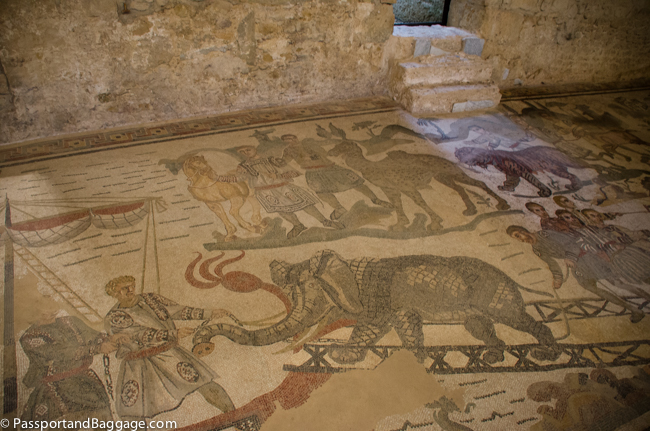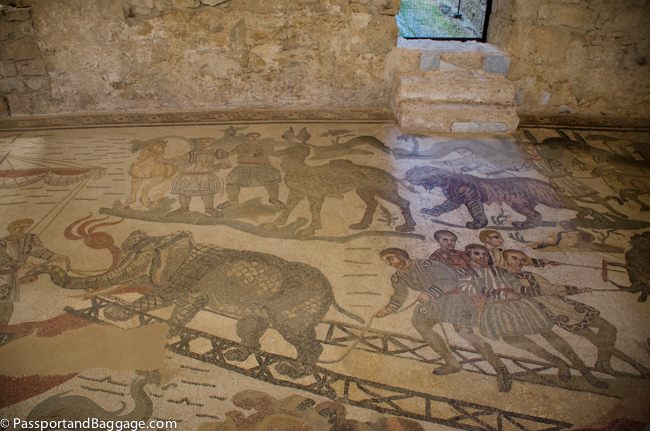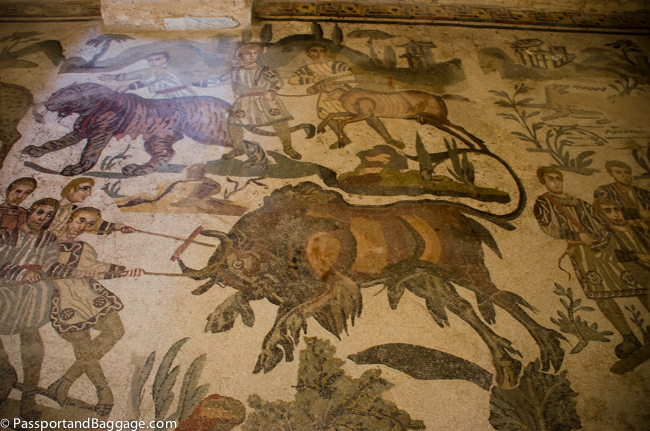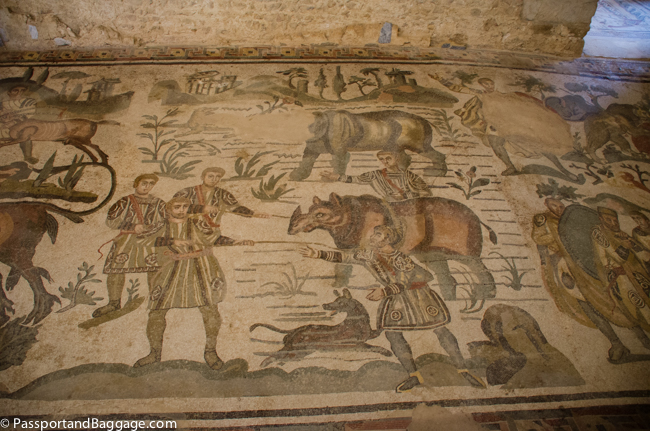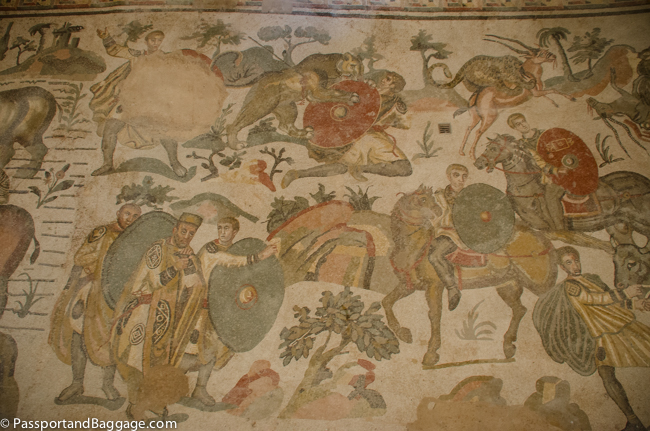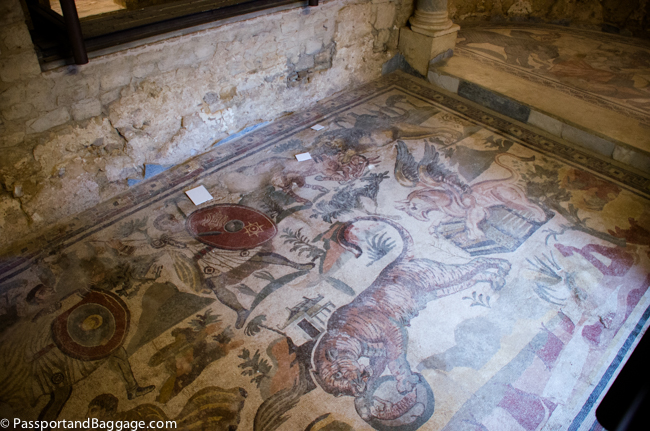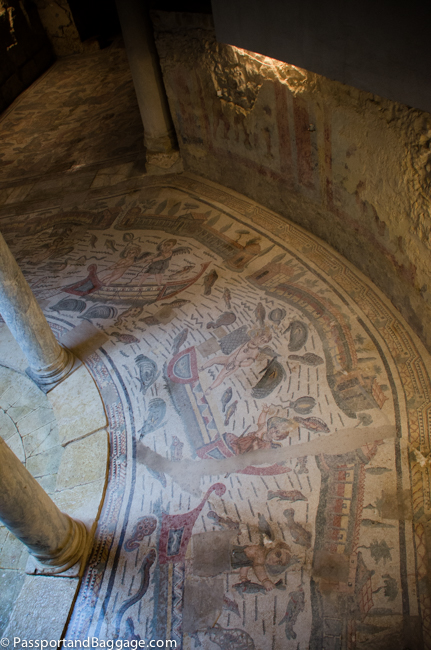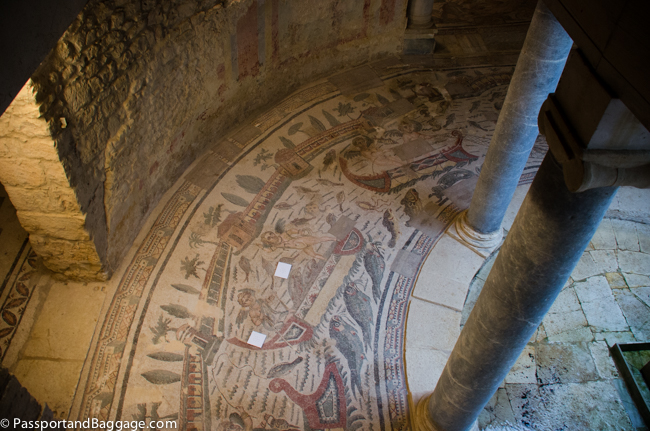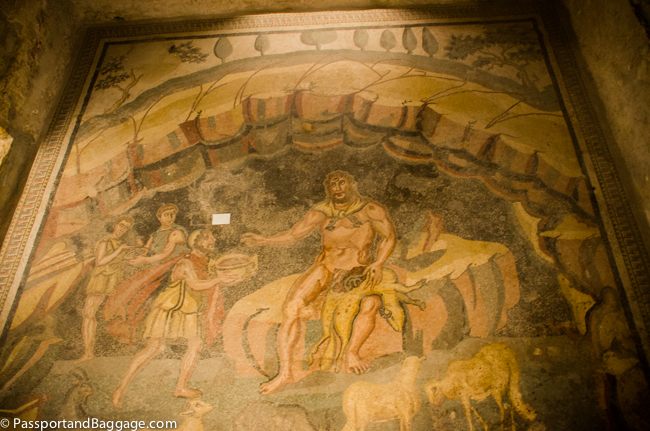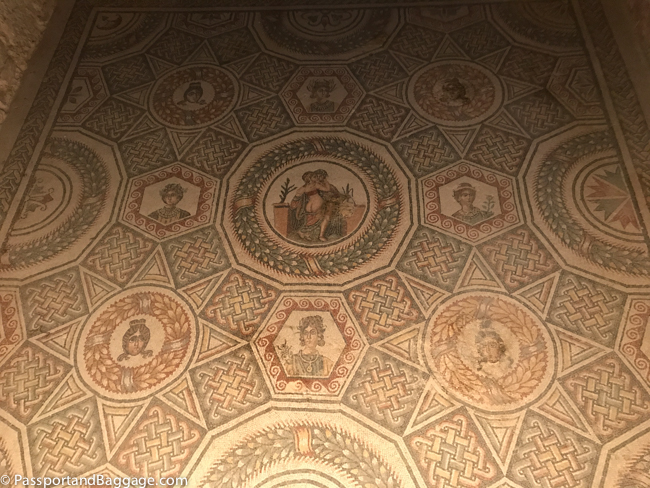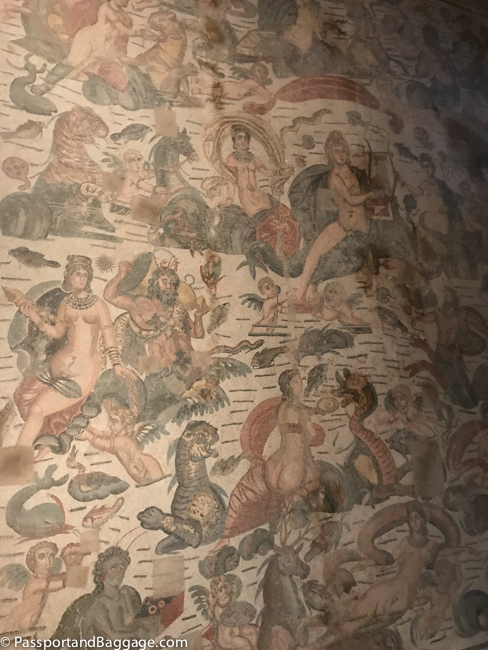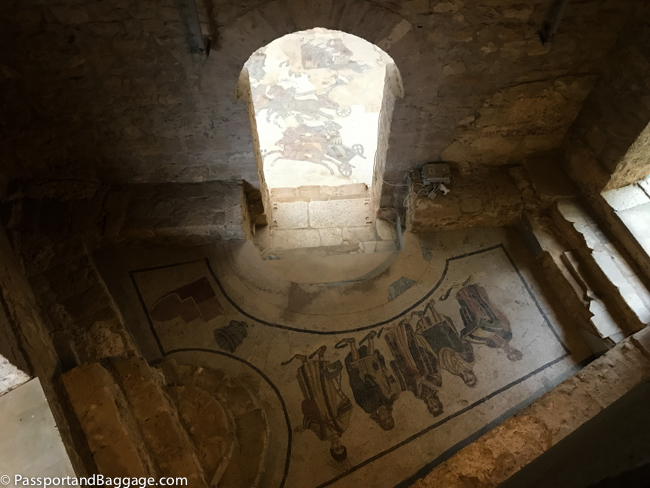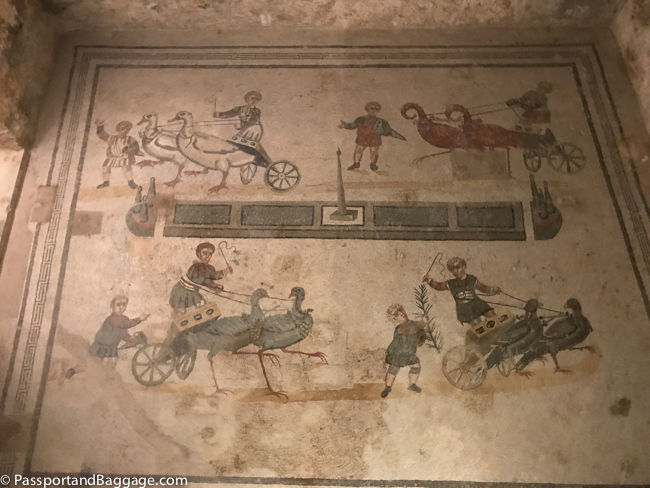November 19, 2019
The ancient Roman Villa of Casale in the town of Piazza Armerina
The visible remains of the villa were constructed in the first quarter of the 4th century CE on the remains of an older villa rustica.
The owner’s identity has long been discussed with no discernible answer. In late antiquity, the Romans partitioned most of the Sicilian hinterland into huge agricultural estates called “latifundia”. The owner was most likely a latifundist who withdrew to the country to administer his estate.
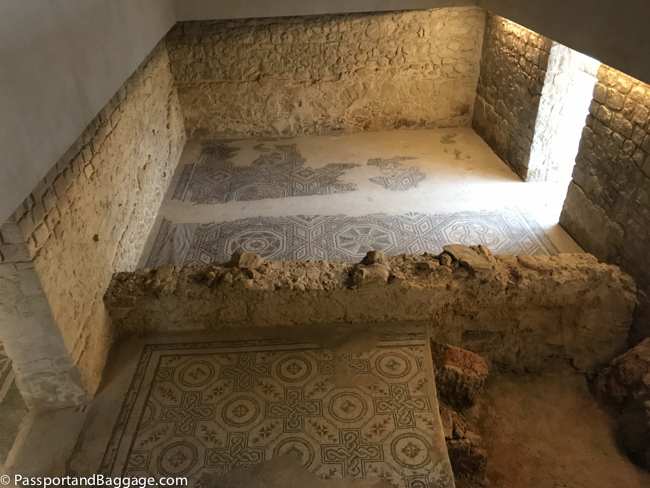 In the 5th and 6th centuries, the villa was fortified for defensive purposes by thickening the perimeter walls. The villa was damaged and perhaps destroyed during the short domination of the Vandals between 469–78. The outbuildings remained in use, at least in part, during the Byzantine and Arab periods. The settlement was destroyed in 1160 during the reign of William I. The site was abandoned in the 12th century CE after a landslide covered the villa.
In the 5th and 6th centuries, the villa was fortified for defensive purposes by thickening the perimeter walls. The villa was damaged and perhaps destroyed during the short domination of the Vandals between 469–78. The outbuildings remained in use, at least in part, during the Byzantine and Arab periods. The settlement was destroyed in 1160 during the reign of William I. The site was abandoned in the 12th century CE after a landslide covered the villa.
The first official archaeological excavations were carried out by Paolo Orsi in 1929, followed by the work of Giuseppe Cultrera in 1935–39.
The protective building was built in the 1950s.
It is difficult to describe how stunning this Villa and its mosaics are. There is almost 38,000 square feet of mosaics, and each one will take your breath away.
Many of the mosaics are difficult to view in the correct direction based on the raised walkways that one must use, however, The Big Game Hunt, while not photographable in one long shot, is the most impressive thing this author has seen in a very long time.
The Big Game Hunt represents the animals from dioceses which made up the Roman Empire, in particular, Africa and its five provinces (Mauritania, Numidia, Proconsular Africa, Tripolitania, and Bizacena) Italy, and India, all bound for the amphitheaters or the pleasure palaces of the Romans.
There is the capture of panthers, enticed into traps by disemboweled goats. There are antelopes, a lion, wild horses, and a boar.
 Their transportation is overseen by a soldier who is beating a slave.
Their transportation is overseen by a soldier who is beating a slave.
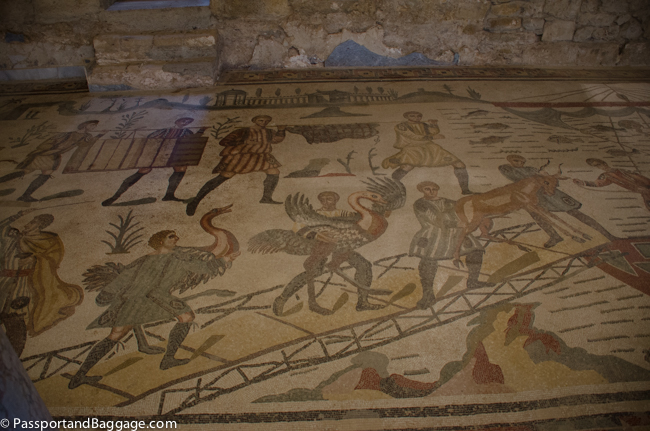 This is followed by the loading of two ostriches onto a ship at the port of Carthage and unloading at Ostia,
This is followed by the loading of two ostriches onto a ship at the port of Carthage and unloading at Ostia,
where they are unloading African as well as Egyptian and Indonesian animals.
One of the most significant is the presence of the elephant between two ships, a symbol of the villa owner’s munificence who might have offered games in the amphitheater of Rome.
The above shows the loading of an elephant at the port of Alexandria in Egypt. There is the capture of an auroch a hippopotamus and a rhinoceros in the Nile delta.
Then there is a richly-dressed figure flanked by soldiers bearing large shields, which has been identified as Emperor Maximan Heraclius.
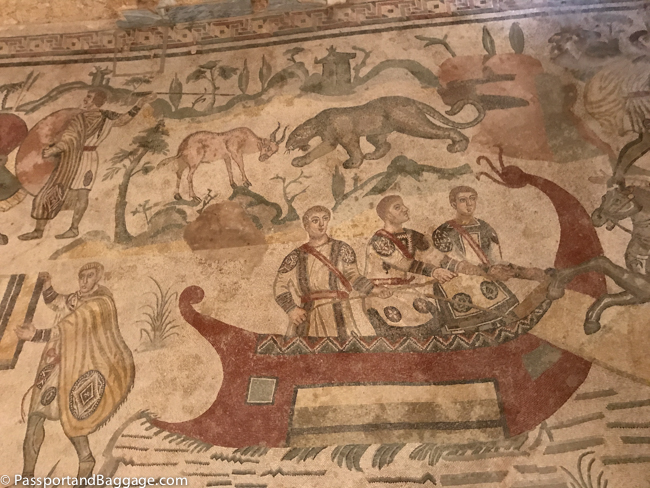
After the transportation of the animals, a soldier on horseback has captured some tiger cubs and is trying to escape onto the ship after throwing a glass ball to distract the tigress’s attention.
Finally, there is the capture of the fantastic gryphon using a child in a cage as bait.
One of the more famous mosaics from Villa Romana is the Room with the Girls in Bikini
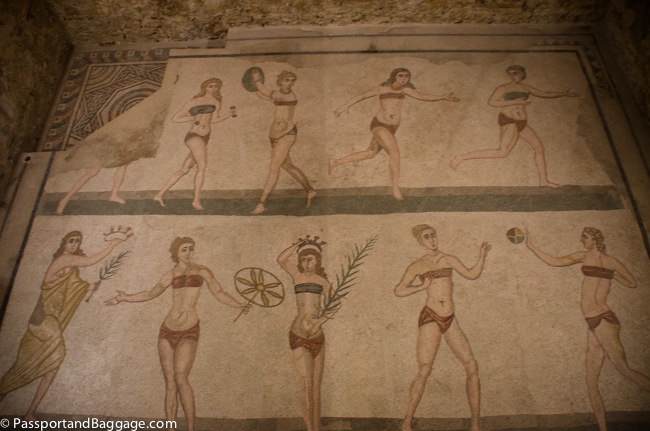 This room was used by the servants. Since it was to be used by servants it should have had a geometric design and in the corner, you can see a lower mosaic in the upper right-hand corner with geometric patterns. This was the third-century original.
This room was used by the servants. Since it was to be used by servants it should have had a geometric design and in the corner, you can see a lower mosaic in the upper right-hand corner with geometric patterns. This was the third-century original.
Sometime in the fourth century, the purpose of the room changed and the 10 girls in bikinis were laid on top of the original
The girls are wearing subligar (gym shorts) and stropkion. They are doing the long jump with weights (haltares) throwing the discus, cross-country running and playing a form of handball.
A mosaic covers the ground of a semi-circular atrium, but the walkways only allow for seeing it at a distance.
This mosaic is a seascape where cupids in boats are fishing with nets, creels, harpoons and fishing lines.
The vestibule of Polyphemus depicts Polyphemus in a cave with Ulysses. Inspired by Homer’s epic poem, Polyphemus, shown larger than Ulysses, is sitting on a large rock holding a disemboweled ram in his right hand. He is about to imbibe in wine offered by Ulysses who hopes to get Polyphemus drunk and blind the eye in the center of his forehead.
The Cubicle with Erotic Scenes is a rectangular alcove. The mosaic depicts a comely lady kissing an ephebus (a male adolescent).
There are hundreds more mosaics in this villa, and each with a divine story and exquisite craftsmanship.
Through the doorway can be seen the palaestra. The floor depicts a quadriga competition at the Circus Maximus in Rome.
Upside down is the Vestibule of the Domina. The lady of the house is leading her two children to the baths.
